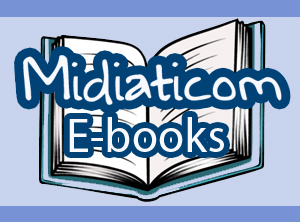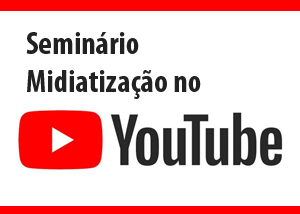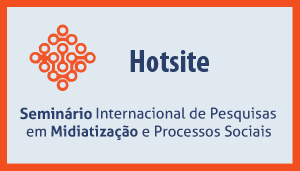A midiatização da educação: um dilema de transparência?
Resumo
Everyday communication is increasingly taking place within media at the same time as media is shaping our society and social life (Couldry & Hepp, 2017). In education we can see this process as the interplay between organizational reforms in schools, often through the entrance of digital administration tools pushed by commercial interest, and the use of data generated through digital systems to measure, compare and evaluate schools (Selwyn & Facer, 2013; Williamson, 2017). The introduction of digital technologies and systems into education is often advertised as increasing transparency – to make learning more visible for students and teachers, to explain previously opaque grading procedures and qualifications to parents and students and to improve communication between schools and the home environment. This paper explores how these claims resonate with how teachers experience the mediatization of their professional environment.
The proposed article draws on material from a recent study on how visual art educators relate to media and mediatic change within their subject. It suggests that while teachers do see the advantages of school digitalization as increasing the visibility of their subject and, by extension, also their professional status, it also makes possible processes of surveillance and standardization. By exploring how teachers recognize and negotiate the built-in biases of digital technologies, the article wants to contribute with a view on schools as mediatized environments and of teachers not only as media workers but also as agents of change. Theoretically, it draws on critical studies of educational technology, addressing the need not only to acknowledge the sociopolitical and financial interests embedded in educational technology and the relation between these markets and the policy sector (e.g. Selwyn & Facer, 2013; Williamson, 2017) but also to focus more on the everyday encounters that teachers and students have with digital technology (Selwyn, 2011). It also uses theoretical conepts from educational sociology (Ball, 2006) and literature from science and technology studies about the relation between professional practices, infrastructures and visibility (Star & Strauss, 1999; Suchman, 1995).
As both Star and Strauss (1999) and Suchman (1995) have shown, all representations of work risk leading to a reduction in complexity. From this perspective, the striving to make educational practices visible might come at the cost of specificity and autonomy. This dilemma is summed up by one of the teachers interviewed for this study, saying that “the digital brings the importance of new forms of knowledge to the fore, at the same time as it enables mechanisms of control”. Indeed, much work remains invisible for good reason, including the work of nurses and teachers who “may quietly carry out work reflecting a holistic view of the student or patient, carefully kept out of the range of a more bureaucratic, reductionist set of values” (Star & Strauss, 1999, p. 23). The messy processes of learning, including such elements as play, chaos, failure and confusion, is perhaps best kept at distance from management and parents.
The teachers in this study accounts for different strategies to keep at least parts of their classroom practices invisible. One of these strategies is to avoid using digital learning management systems and instead focus on interpersonal communication. Another one is to produce convincing manual paperwork in accordance with the perceived demands from an increasingly neoliberal school system as a kind of scene to hide behind. By presenting one thing and doing another, teachers can maintain established work practices and act in accordance with their professional beliefs despite changes in the educational policy landscape.
These approaches to pedagogical planning and documentation can be defined as what educational sociologist Stephen Ball (2006) calls fabrications, the conscious performance of pedagogical practice. Fabrications is in one sense the opposite to transparency as their aim is not to give a true image of what is going on in the classroom or to help student recognize their own learning, but rather at meeting the constraints of contemporary education. “Truthfulness is not the point – the point is their effectiveness” as Ball (2006, p. 696) puts it. For Ball, the process by which “[w]e articulate ourselves within the representational games of competition, intensification and quality” points to a “struggle over visibility” (p. 693) where teachers on the one hand submit to instrumental models of structuring and monitoring teaching and learning processes, and on the other hand produce convincing representations of these models as a strategy of invisibility.
The proposed paper discusses how fabrication in used in different ways to manage the demands of accountability and visible learning of the contemporary school system: on the one hand, a strategy double entries, where fabrications are kept at bay from everyday pedagogical practice, and on the other, anoverall dismissal of fabrications based on the fear that they will reshape the idea of education into a reductionist and instrumental model. The latter approach builds on some kind of fidelity to policy and guidelines and relies on the invisibility granted by not entering into systems of monitoring and documentation, whereas the former uses fabrications as a screen behind which other practices can be partly hidden, requiring a distanced and creative view on written rules and standards.









